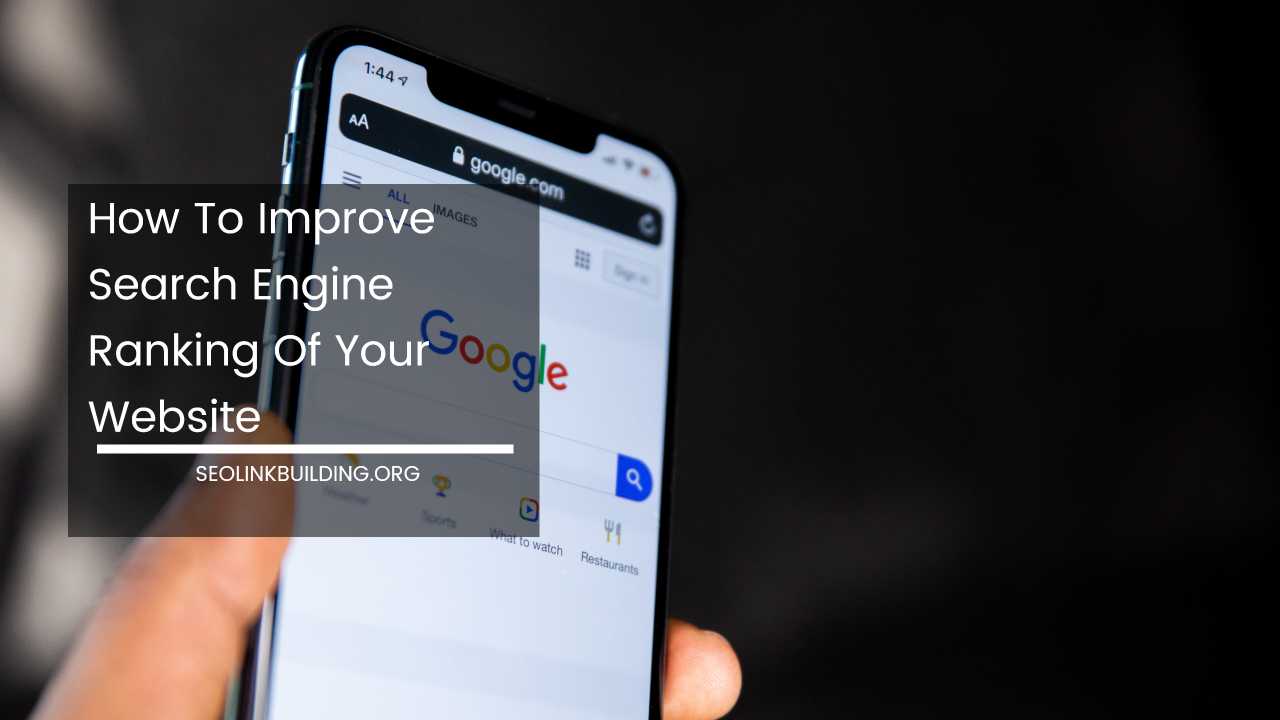How to Do a Basic Backlink Audit

Backlink Audit
How to Do a Basic Backlink Audit: Keeping Your Website’s Link Profile Healthy
In the competitive world of SEO, backlinks reign supreme. These are essentially votes of confidence from other websites, acting as a testament to the quality and trustworthiness of your content. Search engines like Google heavily rely on backlinks as a ranking factor, making a healthy backlink profile essential for boosting your website’s visibility and attracting organic traffic.
However, not all backlinks are created equal. High-quality links from relevant websites can significantly improve your SEO, while low-quality or spammy links can actually harm your rankings. This is where a backlink audit comes into play.
A backlink audit is a comprehensive analysis of all the links pointing to your website. It helps you identify the good, the bad, and the ugly backlinks in your profile, allowing you to focus on building valuable links and disavowing harmful ones.
This guide delves into the steps of conducting a basic backlink audit, even if you’re a complete SEO beginner.
Step 1: Choosing Your Backlink Audit Weaponry
There’s an arsenal of free and paid backlink audit tools available online, each with its own strengths and weaknesses. Here’s a closer look at two popular options to help you pick the right tool for your needs:
- Free Option: Google Search Console (GSC)
Google Search Console (GSC) is a free gift from Google, offering valuable insights into your website’s SEO performance. While it doesn’t provide the most intricate details, GSC’s “Links” section gives you a foundational understanding of your backlink profile. This includes the most linked pages on your site, top linking sites, and the most commonly used anchor text.
- Paid Option: Backlink Audit Powerhouses (Ahrefs, SEMrush)
For a more in-depth analysis, consider investing in a paid backlink audit tool like Ahrefs or SEMrush. These tools offer a wider range of features, including:
- A comprehensive list of all your backlinks with detailed metrics like Domain Rating (DR) and URL Rating (UR) to assess the authority and relevance of linking websites.
- Anchor text analysis to identify any unnatural or spammy anchor text usage that might raise red flags with search engines.
- Backlink history to track the growth and evolution of your backlink profile over time. This can be helpful in identifying sudden spikes or drops in backlinks, which could be a sign of unnatural link-building practices.
- Backlink comparison with competitors to see how your link profile stacks up against theirs. This competitor backlink gap analysis can reveal potential link-building opportunities you might have missed.
Step 2: Quantifying Your Backlink Strength: Total Backlink Count
Start by getting a general sense of your backlink profile’s size. Both GSC and paid backlink tools will display the total number of backlinks pointing to your website.
While a high number of backlinks might seem ideal at first glance, it’s more important to focus on quality over quantity.
A handful of high-quality backlinks from authoritative websites can be far more valuable than a large number of low-quality backlinks from irrelevant sources.
Step 3: Decoding Your Backlink Profile: Referring Domains and Unique Domains
The next step is to delve deeper and identify the websites linking to yours. GSC displays “Top Linking Sites,” while paid backlink audit tools provide a complete list of referring domains. Here’s what to pay close attention to:
- Domain Relevance: Are the linking websites relevant to your niche or industry? Links from high-quality, relevant websites hold more weight with search engines because they indicate a topical connection between your content and the linking website’s content. For example, if you have a website about vegan baking, backlinks from websites about healthy cooking or vegan recipes would be more valuable than backlinks from a website about car repairs.
- Domain Authority: How authoritative are the linking domains? Tools like Ahrefs and SEMrush provide metrics like Domain Rating (DR) to assess a website’s authority. Generally, links from high DR websites are more valuable because they indicate the linking website is itself a trusted and credible source.
- Link Diversity: A healthy backlink profile should consist of links from a variety of websites, not just a few dominant sources. This indicates a natural link-building pattern and reduces the risk of appearing like you’ve engaged in manipulative link-building tactics.
Step 3.5 (Optional): Keeping Pace with the Competition: Link Velocity Analysis
If you’re using a paid backlink audit tool, you can gain a competitive edge by analyzing your link velocity compared to your competitors.
Link velocity refers to the rate at which you’re acquiring new backlinks. A sudden spike in backlinks can be a red flag for search engines, so keeping your link velocity steady and natural is crucial as it suggests a more natural link-building process. Here’s how to analyze link velocity:
- Identify Your Backlink Velocity Trend: Use your backlink audit tool to track the number of backlinks you’ve acquired over a specific period (e.g., past 6 months, year). This will help you visualize the trend of your link velocity.
- Compare Your Link Velocity with Competitors: Analyze your competitors’ link velocity using the same tool. This will give you a sense of how aggressive your competitors are in terms of link building and how your link-building efforts stack up against theirs.
- Maintain a Natural Link Velocity: Aim for a steady and natural increase in backlinks over time. Avoid any sudden spikes that could trigger search engine scrutiny.
Step 4: Stealing from the Best: Competitor Backlink Gap Analysis
Backlink audit tools allow you to perform competitor backlink gap analysis. This powerful technique helps you identify websites linking to your competitors but not to you. These are potential link-building opportunities you can explore to improve your own backlink profile. Here’s how to conduct a competitor backlink gap analysis:
- Choose Your Competitors: Select a few relevant competitors in your niche.
- Identify Shared Backlinks: Use your backlink audit tool to find websites linking to both you and your competitors. These can be valuable benchmarks for your own link-building efforts.
- Unearth Unlinked Opportunities: More importantly, identify websites linking to your competitors but not to you. These are potential link-building targets you can reach out to and explore guest blogging opportunities, content collaborations, or other link-worthy partnerships.
Step 5: Dissecting Backlink Quality: The Art of Backlink Evaluation
Now comes the crucial part: evaluating the quality of your backlinks. Here are some key factors to consider:
- Anchor Text: The text used to link to your website is called anchor text. Ideally, your anchor text should be a natural variation of your target keywords but not an exact match keyword stuffed repeatedly. Avoid links with overly generic anchor text like “click here” or spammy anchor text unrelated to your content. For instance, if you have a blog post about “vegan chocolate chip cookies,” a good anchor text could be “best vegan chocolate chip cookies recipe” or “healthy vegan chocolate chip cookies.” However, anchors like “click here for the recipe” or “visit our website” are less descriptive and provide less value.
Step 5.1: Addressing Unnatural Anchor Text:
- Manual Review: While backlink audit tools can flag unnatural anchor text, it’s essential to manually review these links to make an informed decision.
- Disavowing Harmful Links: If you discover a significant number of backlinks with spammy or irrelevant anchor text, you can disavow them using Google Search Console. Disavowing tells Google to disregard these links when evaluating your website’s SEO merit. However, disavowing links should be done with caution, as disavowing a legitimate link can hurt your SEO. It’s best to consult an SEO expert if you’re unsure about disavowing a particular link.
Step 5.2: Link Placement:
Where on the linking website is your link placed? Links placed within the main content area are generally more valuable than those placed in footers or sidebars.
Links placed within the main content area are typically more relevant to the content itself and suggest a stronger editorial endorsement from the linking website.
Step 5.3: Follow vs. Nofollow Links:
Links can be categorized as either “follow” or “nofollow.” Follow links pass link juice (SEO value) to the linked website, while nofollow links do not.
Ideally, you want a healthy mix of both follow and nofollow links. While nofollow links don’t directly boost your SEO, they can still drive referral traffic to your website and improve brand awareness.
Step 6: Taking Action: Prioritizing Backlink Cleanup
Once you’ve evaluated your backlinks, it’s time to prioritize cleanup efforts. Here’s a recommended approach:
- High Priority: Focus on removing or disavowing spammy backlinks with irrelevant anchor text or those coming from low-quality websites. These links can potentially harm your SEO.
- Medium Priority: Address broken links. Broken links provide a poor user experience and can negatively impact your website’s credibility. Reach out to the webmaster of the linking website and request them to update the link to the correct URL on your website.
- Low Priority: You might encounter nofollow links from irrelevant websites. While these don’t directly impact your SEO, they can dilute the overall quality of your backlink profile. If you have the resources, you can try reaching out to the website owner and requesting them to remove the link. However, this is a lower priority task compared to removing spammy backlinks.
Step 7: Building a Winning Backlink Strategy: Going Beyond Cleanup
A backlink audit isn’t just about cleaning up your backlink profile; it’s also about identifying opportunities to build high-quality backlinks. Here are some strategies to consider:
-
Create High-Quality Content: The foundation of any successful link-building strategy is creating valuable, informative, and engaging content that people naturally want to link to. Focus on content that addresses your target audience’s pain points, offers unique insights, or provides solutions to their problems.
-
Guest Blogging: Guest blogging on relevant websites in your niche is a great way to earn backlinks and reach a wider audience. Research high-authority websites that accept guest posts and create high-quality content aligned with their editorial guidelines.
-
Broken Link Building: Find broken links on relevant websites within your niche and reach out to the webmaster. Suggest your content as a replacement for the broken link, ensuring your content offers similar value to the original one.
-
Industry Awards and Recognition: Winning industry awards or being recognized by credible organizations can lead to backlinks from news websites and industry publications. Actively participate in relevant industry events and awards to increase brand awareness and potentially earn valuable backlinks.
-
HARO (Help a Reporter Out): HARO is a free service that connects journalists with sources for their stories. Signing up for HARO allows you to respond to journalists’ queries and potentially get featured in their articles, often with a backlink to your website.
Step 8: Keeping Your Backlink Profile Healthy: Ongoing Monitoring
Backlink audits shouldn’t be a one-time thing. Regularly monitor your backlink profile to identify any new spammy links or broken links. You can use your backlink audit tool to schedule automated alerts for any new backlinks or significant changes in your backlink profile.
Additionally, consider using Google Alerts to set up notifications for any mentions of your brand name online. This can help you catch new backlinks that your backlink audit tool might miss.
Final Word: Backlink Audits: Your Path to a Healthy Website
By conducting regular backlink audits, you can gain valuable insights into your website’s SEO health. By identifying and removing low-quality backlinks and focusing on building high-quality backlinks, you can ensure your website has a strong and trustworthy backlink profile that will help you climb the search engine rankings ladder and attract organic traffic.
Remember, a healthy backlink profile is an ongoing process, so stay vigilant, keep creating high-quality content, and explore strategic link-building opportunities to maintain a strong online presence.













